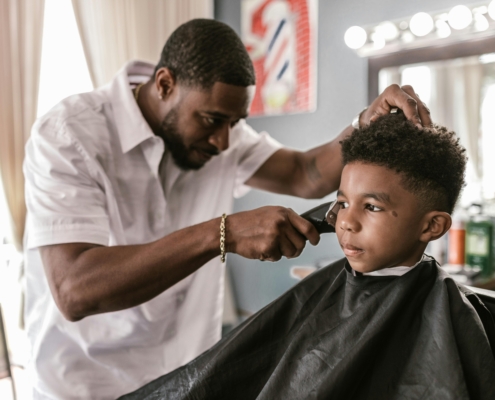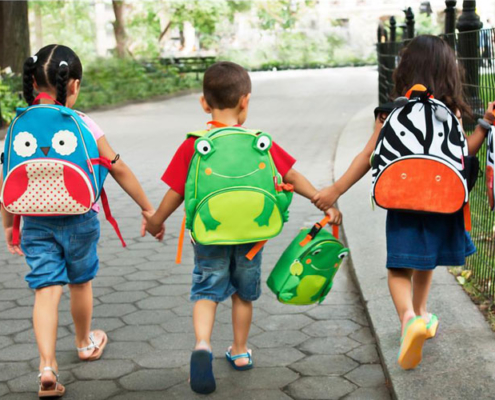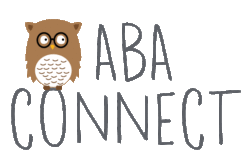
Creating a Positive Haircut Experience for Kids with Autism
A Parent's Perspective: Tips for Sensory-Friendly Haircuts
I used to cut my son's hair. I knew if I took him somewhere for a haircut, he would freak out from the overwhelming sensory experience. But if I cut it, I could set the stage for success…

How to Increase Your Child’s Skill in Following Directions
Whether your child ignores your directions completely, or dawdles for what seems like endless amounts of time before eventually complying, parents are often frustrated when children don’t follow instructions. You may wind up nagging or yelling…

Alternatives to Time-Out
Originally posted December 3, 2014 by Dr. Lindsay Evans, additions made December 18, 2020 by Amanda Dixon
Time-out can be an effective discipline technique for many children. However, some parents may want to approach challenging behavior…
 https://www.abaconnect.com/wp-content/uploads/2018/12/santa_kid.png
294
446
ABA Connect
https://www.abaconnect.com/wp-content/uploads/2021/04/ABA_CONNECT_LOGO_NO_TAG_NUHB_V3_proStyle-e1617647363201.gif
ABA Connect2018-12-20 17:33:222019-12-06 18:56:42Survive the Holidays
https://www.abaconnect.com/wp-content/uploads/2018/12/santa_kid.png
294
446
ABA Connect
https://www.abaconnect.com/wp-content/uploads/2021/04/ABA_CONNECT_LOGO_NO_TAG_NUHB_V3_proStyle-e1617647363201.gif
ABA Connect2018-12-20 17:33:222019-12-06 18:56:42Survive the Holidays https://www.abaconnect.com/wp-content/uploads/2017/12/fear-of-needles.png
276
425
ABA Connect
https://www.abaconnect.com/wp-content/uploads/2021/04/ABA_CONNECT_LOGO_NO_TAG_NUHB_V3_proStyle-e1617647363201.gif
ABA Connect2017-12-29 20:56:082020-12-26 22:47:23Behavioral Treatment for Specific Fears and Phobias
https://www.abaconnect.com/wp-content/uploads/2017/12/fear-of-needles.png
276
425
ABA Connect
https://www.abaconnect.com/wp-content/uploads/2021/04/ABA_CONNECT_LOGO_NO_TAG_NUHB_V3_proStyle-e1617647363201.gif
ABA Connect2017-12-29 20:56:082020-12-26 22:47:23Behavioral Treatment for Specific Fears and Phobias
Enjoying the Holidays with a Child on the Spectrum: Visiting Santa

Supplemental and Alternative ADHD Interventions
Popular supplemental and alternative ADHD interventions include removing certain foods from an individual's diet or adding vitamins/supplements and other foods. Some of these methods may be minimally effective. It is important to consider the…
 https://www.abaconnect.com/wp-content/uploads/2017/04/skip-hop-zoo.jpg
500
728
ABA Connect
https://www.abaconnect.com/wp-content/uploads/2021/04/ABA_CONNECT_LOGO_NO_TAG_NUHB_V3_proStyle-e1617647363201.gif
ABA Connect2017-04-07 19:09:452020-12-26 22:11:205 very simple tips for getting the kiddos to school on time
https://www.abaconnect.com/wp-content/uploads/2017/04/skip-hop-zoo.jpg
500
728
ABA Connect
https://www.abaconnect.com/wp-content/uploads/2021/04/ABA_CONNECT_LOGO_NO_TAG_NUHB_V3_proStyle-e1617647363201.gif
ABA Connect2017-04-07 19:09:452020-12-26 22:11:205 very simple tips for getting the kiddos to school on time https://www.abaconnect.com/wp-content/uploads/2017/04/Grocery-shopping-with-baby.jpg
433
605
Dr. Mariel Cannady
https://www.abaconnect.com/wp-content/uploads/2021/04/ABA_CONNECT_LOGO_NO_TAG_NUHB_V3_proStyle-e1617647363201.gif
Dr. Mariel Cannady2017-04-05 13:04:192021-10-07 18:41:14Decrease Autism-Related Shopping Meltdowns
https://www.abaconnect.com/wp-content/uploads/2017/04/Grocery-shopping-with-baby.jpg
433
605
Dr. Mariel Cannady
https://www.abaconnect.com/wp-content/uploads/2021/04/ABA_CONNECT_LOGO_NO_TAG_NUHB_V3_proStyle-e1617647363201.gif
Dr. Mariel Cannady2017-04-05 13:04:192021-10-07 18:41:14Decrease Autism-Related Shopping Meltdowns https://www.abaconnect.com/wp-content/uploads/2017/04/Mom_shopping_with_child.jpg
399
600
Dr. Mariel Cannady
https://www.abaconnect.com/wp-content/uploads/2021/04/ABA_CONNECT_LOGO_NO_TAG_NUHB_V3_proStyle-e1617647363201.gif
Dr. Mariel Cannady2017-04-05 12:47:322021-10-07 18:41:24Understanding Autism-Related Shopping Meltdowns
https://www.abaconnect.com/wp-content/uploads/2017/04/Mom_shopping_with_child.jpg
399
600
Dr. Mariel Cannady
https://www.abaconnect.com/wp-content/uploads/2021/04/ABA_CONNECT_LOGO_NO_TAG_NUHB_V3_proStyle-e1617647363201.gif
Dr. Mariel Cannady2017-04-05 12:47:322021-10-07 18:41:24Understanding Autism-Related Shopping Meltdowns https://www.abaconnect.com/wp-content/uploads/2017/01/santa-with-child-pic.jpg
760
1162
ABA Connect
https://www.abaconnect.com/wp-content/uploads/2021/04/ABA_CONNECT_LOGO_NO_TAG_NUHB_V3_proStyle-e1617647363201.gif
ABA Connect2016-12-21 05:20:442019-12-02 15:57:27Make A Plan to Avoid Santa Trauma
https://www.abaconnect.com/wp-content/uploads/2017/01/santa-with-child-pic.jpg
760
1162
ABA Connect
https://www.abaconnect.com/wp-content/uploads/2021/04/ABA_CONNECT_LOGO_NO_TAG_NUHB_V3_proStyle-e1617647363201.gif
ABA Connect2016-12-21 05:20:442019-12-02 15:57:27Make A Plan to Avoid Santa Trauma
New Year, New You?
The New Year often brings resolutions of positive, sometimes dramatic changes to our lifestyles. Goals of weight loss, exercise, healthy eating, organization, or career accomplishment are commonly kick-started by the changing of the calendar.…
